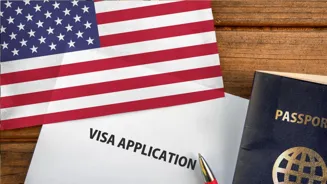US Citizenship and Immigration Services (USCIS) will change how it calculates a child’s age under the Child Status Protection Act (CSPA), a move that could
impact eligibility for thousands of applicants. Starting August 15, USCIS will use the Final Action Dates chart from the State Department's monthly Visa Bulletin to determine when a visa becomes "available" for CSPA purposes. The change aligns USCIS policy with the State Department’s process and replaces a February 2023 rule that allowed more applicants to qualify by using the Dates for Filing chart. The 2023 approach, the agency said, created "inconsistent treatment" between applicants filing for adjustment of status within the US and those applying abroad through the State Department. "Generally, an unmarried alien child must be under age 21 to obtain lawful permanent resident status… If they turn 21 and age out during the immigration process, they generally are no longer eligible," the agency said in its announcement. The CSPA, enacted by Congress, allows certain children to retain eligibility based on when a visa number becomes available. USCIS said the updated policy will apply to requests filed on or after August 15. Adjustment of status applications pending before that date will continue to be processed under the 2023 policy, as those applicants "may have relied on that policy when they filed". The update also clarifies that applicants must seek permanent residency within one year of a visa becoming available to benefit from CSPA protection. Exceptions will be made for those who can show "extraordinary circumstances" that prevented timely filing. Experts say the change could disproportionately affect Indian children, as final action dates are often years behind filing dates. Many could turn 21, "aging out", before their family’s green card is approved, forcing them to leave the United States. "More children are at risk. The final action date is often years behind the filing date, and many will lose eligibility before a visa becomes available," said Sukanya Raman, country head of Davies & Associates, told Economic Times. Indians make up 62% of the employment-based green card backlog, according to the Cato Institute. Immigration law firms report a surge in calls from anxious parents. The experts also advised families to file before August 15 to lock in their child’s age under the older policy. Other options include applying for student (F-1) or work (H-1B) visas for children nearing 21, or pursuing EB-5 investor visas as an alternative route to residency, they suggest.
















